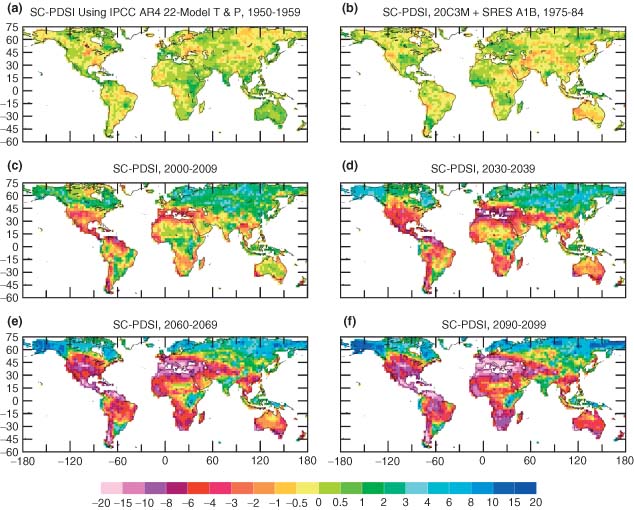In a recent study supported by the National Science Foundation (Wiley Interdisciplinary Reviews: “Drought under global warming: a review,” first published online 10/19/10), researchers from the U.S. National Center for Atmospheric Research state that the warming global climate will likely create increasingly dry conditions across much of the globe over at least the next 30 years. Lead scientist Aiguo Dai says that analysis of an ensemble of 22 climate models and a comprehensive drought index indicates dryness is likely to increase substantially across most of the Western Hemisphere, as well as large parts of Eurasia, Africa and Australia.
The concurrent increase in wetness over the northern, sparsely populated high latitudes won’t compensate for the increasing aridity elsewhere, the report warns. “The work argues credibly that the worst consequences of global warming may come in the form of reductions in water resources,” said Dai. “We are facing the possibility of widespread drought in the coming decades, but this has yet to be fully recognized by both the public and the climate change research community,” he stated. “If the projections in this study come even close to being realized, the consequences for society worldwide will be enormous.”
Dai states that the findings are based on the best current projections of greenhouse gas emissions, but he cautions that global climate models have produced less reliable projections of changes in precipitation due to climate change, especially on a regional scale, than they have with temperature changes. What actually happens with the climate will depend on many factors, including actual emissions and natural climate cycles such as El Niño/La Niña.
Editor’s note: Most of the above was taken from Earthweek: A Diary of the Planet.



